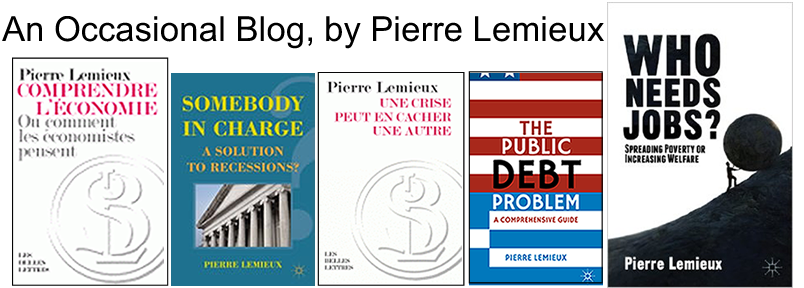The Sandy Hook shooting raises issues that are often forgotten by both the pro-gun and the anti-gun side.
The first issue, ignored by the pro-gun side, is that the availability of guns does, other things being equal, increase the potential damage that madmen can do. A spate of knife attacks on schoolchildren in China has been recently observed, but with fewer deaths than for gun attacks in Scotland, Norway, or America.
A second issue, ignored by the anti-gun side, is that things need not be equal. If ordinary citizens are allowed to carry guns for self-defense, they can lower the probability of, or damage by, mass killings. Indeed, it is striking that these mass killings nearly always occur in gun-free zones like schools. Mass killings don’t happen in police stations, at gun clubs, or in hunters’ camps. Sandy Hook School’s principal, and perhaps other staff members, who confronted the killer as he was shooting could have saved precious lives if only they had been armed. Even assuming the killer wore body armor, such protection is never 100% effective; at any rate, being forced to engage in a gunfight is, at the very least, a big distraction which would prevent innocent deaths as long as it lasts.
It is remarkable that money conveyors are armed, which everybody approves, while school officials are forbidden to be armed, which most people seem to view as totally normal. The incapacity of police to stop an ongoing mass killing before a lot of damage is done was tragically illustrated at Sandy Hook. It was reported that policemen in “full camouflage” arrived at the family home of the killer two hours after he had committed his heinous crimes.
A third issue, which tends to be ignored by both sides, is the specific problem of young men committing mass murders, often against innocent and defenseless children. Although these happen more often in America, they have also hit many countries with tough gun controls (including Canada and the UK). The phenomenon is obviously not directly related to the availability of guns, if only for one reason: guns were more available in America, Canada, and Europe one century ago, a time when the sort of mass murders we are now witnessing was unknown.
This last issue, in turn, raises a central question: what can prevent a deranged person from venting his frustration through mass killing?
Disregarding the possibility that the victims or somebody else on site might actually stop the killings, one constraint lies in morals. Whether moral principles are based on the value of human life or on some other values, they establish strict no-nos. Such informal prohibitions used to be tightly but peacefully enforced by families and by religion. The breakdown of both institutions must have something to do with the rise of the young mass killer. Perhaps a contributing factor has been the rapid pace of disrupting change (in both the West and China).
The welfare state is seemingly incapable of replacing morals in the control of senseless violence. A terrible example was provided by the Sandy Hook massacre: the Wall Street Journal reports that “according to state court records, the suspected gunman’s parents divorced in 2009 [and] filed certification of their completion of a parenting-education program, a Connecticut state requirement in divorce proceedings if the couple has children under the age of 18.” Taking people in charge does not make them more responsible. Crushing individuals with laws doesn’t diminish their level of frustration. It may be the contrary.
Many mass killers appear to be losers. Of course, losers have always been around and will always be. But they used to be more respectful of ambient opinion and morals, for better and for worse—and certainly for better if they had killing impulses. Perhaps they also had more problems procuring the means of ostentatious crimes such as a gun and a car, not to mention free time for dirty thinking and planning after the requirements of physical survival had been met. The homeless, the beggar, and many of the working poor still don’t have the tools to commit mass murders; many other losers seem able to acquire them.
Another factor preventing a deranged person from committing an ostentatious public crime, be it the burning of a temple as Erostratus did in 356 B.C. or a school mass murder, might be found in the vague notion of culture. I take culture in its learned meaning, not in the all-encompassing, black-box sense that sociologists have given it. When one has culture, that is, knows bridges between oneself and the adventure of mankind, one attributes to one’s own life too much value to end it with an infamous suicide. If this hypothesis is true, it would go some way toward explaining why the most culture-heavy countries of Europe (France, Italy, Spain, Greece…) seem to better avoid senseless mass murders against innocent victims.
Whatever the missing constraints that now prevent young men (for these are the perpetrators) from committing such crimes, there is obviously something very wrong with our societies. And this has little to do with the availability of guns.
